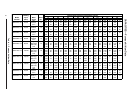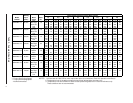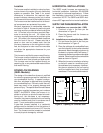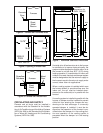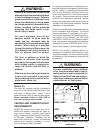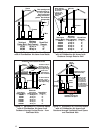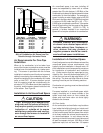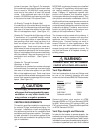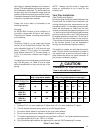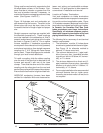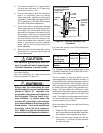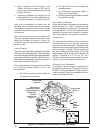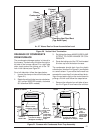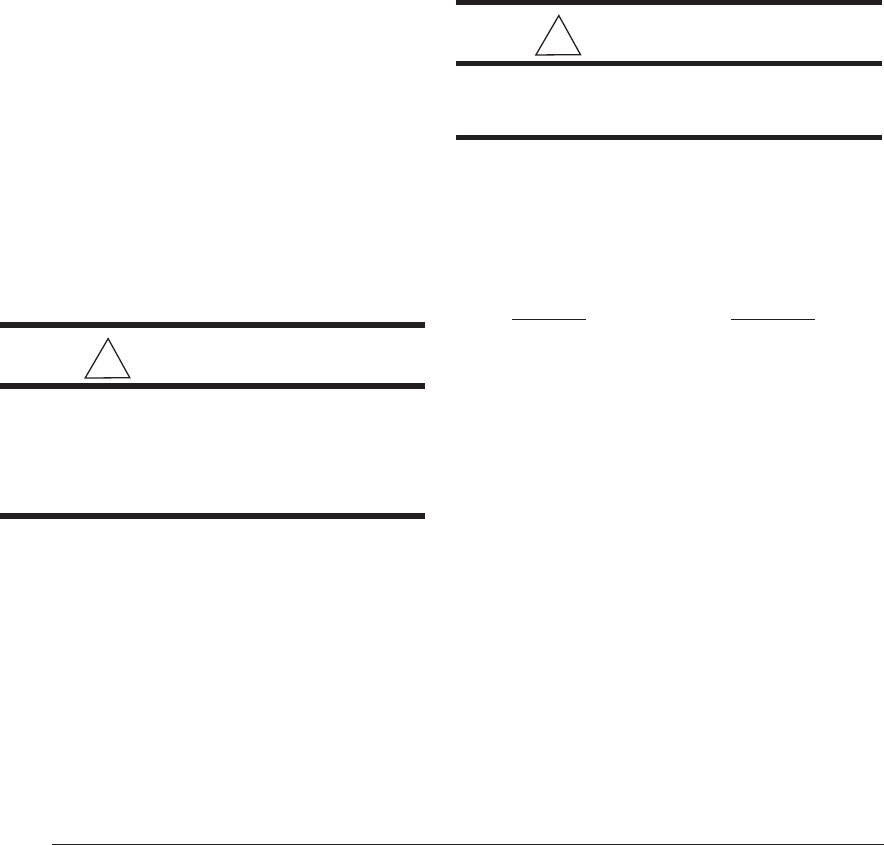
14
inches of free area. See Figure 9. For example,
if the combined input rate of all appliances is less
than or equal to 100,000 Btuh,
each
opening
must have a free area of at least 100 square
inches. If the combined input rate of all appli-
ances is 120,000 Btuh,
each
opening must have
a free area of at least 120 square inches.
Air Directly Through An Exterior Wall
If combustion air is provided directly through an
exterior wall, the two openings must
each
have
free area of at least one square inch per 4000
Btuh of
total
appliance input. (See Figure 10.)
Outdoor Air Through Vertical Openings or Ducts
If combustion air is provided through vertical
ducts or openings to attics or crawl spaces, the
two openings must each have free area of at
least one square inch per 4000 Btuh of total
appliance input. Ducts must have cross-sec-
tional areas at least as large as the free area of
their respective openings to the furnace space.
Attics or crawl spaces must communicate freely
with the outdoors if they are the source of air for
combustion and ventilation. (See Figures 11
and 12.)
Outdoor Air Through Horizontal
Openings or Ducts
If combustion air is taken from outdoors through
horizontal ducts, the openings must
each
have
free area of at least one square inch per 2000
Btuh of total appliance input. Ducts must have
cross-sectional area at least as large as the free
area of their respective openings to the furnace
space. (See Figure 13.)
!
CAUTION:
Do not supply combustion air from an
attic space that is equipped with power
ventilation or any other device that
may produce a negative pressure.
VENTING REQUIREMENTS
This section specifies installation requirements
for vent and "2-pipe" combustion air piping. For
"one pipe" installations, install vent piping per
this section and provide air for combustion and
ventilation per the previous section. The capac-
ity table provided in this section applies to the
total of vent and combustion air piping for either
type of installation.
NORDYNE condensing furnaces are classified
as "Category IV" appliances, which require spe-
cial venting materials and installation proce-
dures. Category IV appliances operate with
positive vent pressure and therefore require
vent systems which are thoroughly sealed. They
also produce combustion condensate, which is
slightly acidic and can cause severe corrosion of
ordinary venting materials. Furnace operation
can be adversely affected by restrictive vent and
combustion air piping. Therefore,
vent and com-
bustion air piping lengths must conform com-
pletely to the requirements of Table 5.
The furnace must be vented to the outdoors. It
must not be vented in common with any other
appliance, even if that appliance is of the con-
densing type. Common venting can result in
severe corrosion of other appliances or their
venting and can allow combustion gases to
escape through such appliances or vents. Do
not vent the furnace to a fireplace chimney or
building chase.
!
WARNING:
FURNACE MUST NOT BE COMMON
VENTED WITH OTHER APPLIANCES.
Vent Pipe Material
Vent and combustion air pipe and fittings must
be one of the following materials and must
conform to the indicated ANSI/ASTM standards:
Material Standard
Schedule 40 PVC D1785
PVC-DWV D2665
SDR-21* D2241
& SDR-26*
ABS-DWV D2661
Schedule 40 ABS F628
Cement and primer must conform to ATSM
Standard D2564 for PVC and Standard D2235
for ABS. When joining PVC piping to ABS, use
PVC solvent cement. (See procedure specified
in ASTM Standard D3138.)
Vent Pipe Length and Diameter
In order for the furnace to operate properly, the
combustion air and vent piping must not be exces-
sively restrictive. To ensure this use Table 5, which
indicates the maximum allowable piping length for
a furnace of specified input rate, when installed



